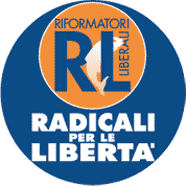Ayn Rand’s Literature of Capitalism
One of the most influential business books ever written is a 1,200-page novel published 50 years ago, on Oct. 12, 1957. It is still drawing readers; it ranks 388th on Amazon.com’s best-seller list. (“Winning,” by John F. Welch Jr., at a breezy 384 pages, is No. 1,431.)
The book is “Atlas Shrugged,” Ayn Rand’s glorification of the right of individuals to live entirely for their own interest.
For years, Rand’s message was attacked by intellectuals whom her circle labeled “do-gooders,” who argued that individuals should also work in the service of others. Her book was dismissed as an homage to greed. Gore Vidal described its philosophy as “nearly perfect in its immorality.”
But the book attracted a coterie of fans, some of them top corporate executives, who dared not speak of its impact except in private. When they read the book, often as college students, they now say, it gave form and substance to their inchoate thoughts, showing there is no conflict between private ambition and public benefit.
“I know from talking to a lot of Fortune 500 C.E.O.’s that ‘Atlas Shrugged’ has had a significant effect on their business decisions, even if they don’t agree with all of Ayn Rand’s ideas,” said John A. Allison, the chief executive of BB&T, one of the largest banks in the United States.
“It offers something other books don’t: the principles that apply to business and to life in general. I would call it complete,” he said.
One of Rand’s most famous devotees is Alan Greenspan, the former chairman of the Federal Reserve, whose memoir, “The Age of Turbulence,” will be officially released Monday.
Mr. Greenspan met Rand when he was 25 and working as an economic forecaster. She was already renowned as the author of “The Fountainhead,” a novel about an architect true to his principles. Mr. Greenspan had married a member of Rand’s inner circle, known as the Collective, that met every Saturday night in her New York apartment. Rand did not pay much attention to Mr. Greenspan until he began praising drafts of “Atlas,” which she read aloud to her disciples, according to Jeff Britting, the archivist of Ayn Rand’s papers. He was attracted, Mr. Britting said, to “her moral defense of capitalism.”
Rand’s free-market philosophy was hard won. She was born in 1905 in Russia. Her life changed overnight when the Bolsheviks broke into her father’s pharmacy and declared his livelihood the property of the state. She fled the Soviet Union in 1926 and arrived later that year in Hollywood, where she peered through a gate at the set where the director Cecil B. DeMille was filming a silent movie, “King of Kings.”
He offered her a ride to the set, then a job as an extra on the film and later a position as a junior screenwriter. She sold several screenplays and intermittently wrote novels that were commercial failures, until 1943, when fans of “The Fountainhead” began a word-of-mouth campaign that helped sales immensely.
Shortly after “Atlas Shrugged” was published in 1957, Mr. Greenspan wrote a letter to The New York Times to counter a critic’s comment that “the book was written out of hate.” Mr. Greenspan wrote: “ ‘Atlas Shrugged’ is a celebration of life and happiness. Justice is unrelenting. Creative individuals and undeviating purpose and rationality achieve joy and fulfillment. Parasites who persistently avoid either purpose or reason perish as they should.”
Rand’s magazine, The Objectivist, later published several essays by Mr. Greenspan, including one on the gold standard in 1966.
Rand called “Atlas” a mystery, “not about the murder of man’s body, but about the murder — and rebirth — of man’s spirit.” It begins in a time of recession. To save the economy, the hero, John Galt, calls for a strike against government interference. Factories, farms and shops shut down. Riots break out as food becomes scarce.
Rand said she “set out to show how desperately the world needs prime movers and how viciously it treats them” and to portray “what happens to a world without them.”
The book was released to terrible reviews. Critics faulted its length, its philosophy and its literary ambitions. Both conservatives and liberals were unstinting in disparaging the book; the right saw promotion of godlessness, and the left saw a message of “greed is good.” Rand is said to have cried every day as the reviews came out.
Rand had a reputation for living for her own interest. She is said to have seduced her most serious reader, Nathaniel Branden, when he was 24 or 25 and she was at least 50. Each was married to someone else. In fact, Mr. Britting confirmed, they called their spouses to a meeting at which the pair announced their intention to make the mentor-protégé relationship a sexual one.
“She wasn’t a nice person, ” said Darla Moore, vice president of the private investment firm Rainwater Inc. “But what a gift she’s given us.”
Ms. Moore, a benefactor of the University of South Carolina, spoke of her debt to Rand in 1998, when the business school at the university was named in Ms. Moore’s honor. “As a woman and a Southerner,” she said, “I thrived on Rand’s message that only quality work counted, not who you are.”
Rand’s idea of “the virtue of selfishness,” Ms. Moore said, “is a harsh phrase for the Buddhist idea that you have to take care of yourself.”
Some business leaders might be unsettled by the idea that the only thing members of the leadership class have in common is their success. James M. Kilts, who led turnarounds at Gillette, Nabisco and Kraft, said he encountered “Atlas” at “a time in college life when everybody was a nihilist, anti-establishment, and a collectivist.” He found her writing reassuring because it made success seem rational.
“Rand believed that there is right and wrong,” he said, “that excellence should be your goal.”
John P. Stack is one business executive who has taken Rand’s ideas to heart. He was chief executive of Springfield Remanufacturing Company, a retooler of tractor engines in Springfield, Mo., when its parent company, International Harvester, divested itself of the firm in the recession of 1982, the year Rand died.
Having lost his sole customer in a struggling Rust Belt city, Mr. Stack says, he took action like a hero out of “Atlas.” He created an “open book” company in which employees were transparently working in their own interest.
Mr. Stack says that he assigned every job a bottom line value and that every salary, including his own, was posted on a company ticker daily. Workplaces, he said, are notoriously undemocratic, emotionally charged and political.
Mr. Stack says his free market replaced all that with rational behavior. A machinist knew exactly what his working hour contributed to the bottom line, and therefore the cost of slacking off. This, Mr. Stack said, was a manifestation of the philosophy of objectivism in “Atlas”: people guided by reason and self-interest.
“There is something in your inner self that Rand draws out,” Mr. Stack said. “You want to be a hero, you want to be right, but by the same token you have to question yourself, though you must not listen to interference thrown at you by the distracters. The lawyers told me not to open the books and share equity.” He said he defied them. “ ‘Atlas’ helped me pursue this idiot dream that became SRC.”
Mr. Stack said he was 19 and working in a factory when a manager gave him a copy of the book. “It’s the best business book I ever read,” he said. “I didn’t do well in school because I was a big dreamer. To get something that tells you to take your dreams seriously, that’s an eye opener.”
Mr. Stack said he gave a copy to his son, Tim Stack, 25, who was so inspired that he went to work for a railroad, just like the novel’s heroine, Dagny Taggart.
Every year, 400,000 copies of Rand’s novels are offered free to Advanced Placement high school programs. They are paid for by the Ayn Rand Institute, whose director, Yaron Brook, said the mission was “to keep Rand alive.”
Last year, bookstores sold 150,000 copies of the book. It continues to hold appeal, even to a younger generation. Mark Cuban, the owner of the Dallas Mavericks, who was born in 1958, and John P. Mackey, the chief executive of Whole Foods, who was 3 when the book was published, have said they consider Rand crucial to their success.
The book’s hero, John Galt, also continues to live on. The subcontractor hired to demolish the former Deutsche Bank building, which was damaged when the World Trade Center towers fell, was the John Galt Corporation. It was removed from the job last month after a fire at the building killed two firefighters.
In Chicago, there is John Galt Solutions, a producer of software for supply chain companies like Tastykake. The founder and chief executive of the company, Annemarie Omrod, said she considered the character an inspiration.
“We were reading the book,” she said, when she and Kai Trepte were thinking of starting the company. “For us, the book symbolized the importance of growing yourself and bettering yourself without hindering other people. John Galt took all the great minds and started a new society.
“Some of our customers don’t know the name, though after they meet us, they want to read the book,” she went on. “Our sales reps have a problem, however. New clients usually ask: ‘Hey, where is John Galt? How come I’m not important enough to rate a visit from John Galt?’ ”























